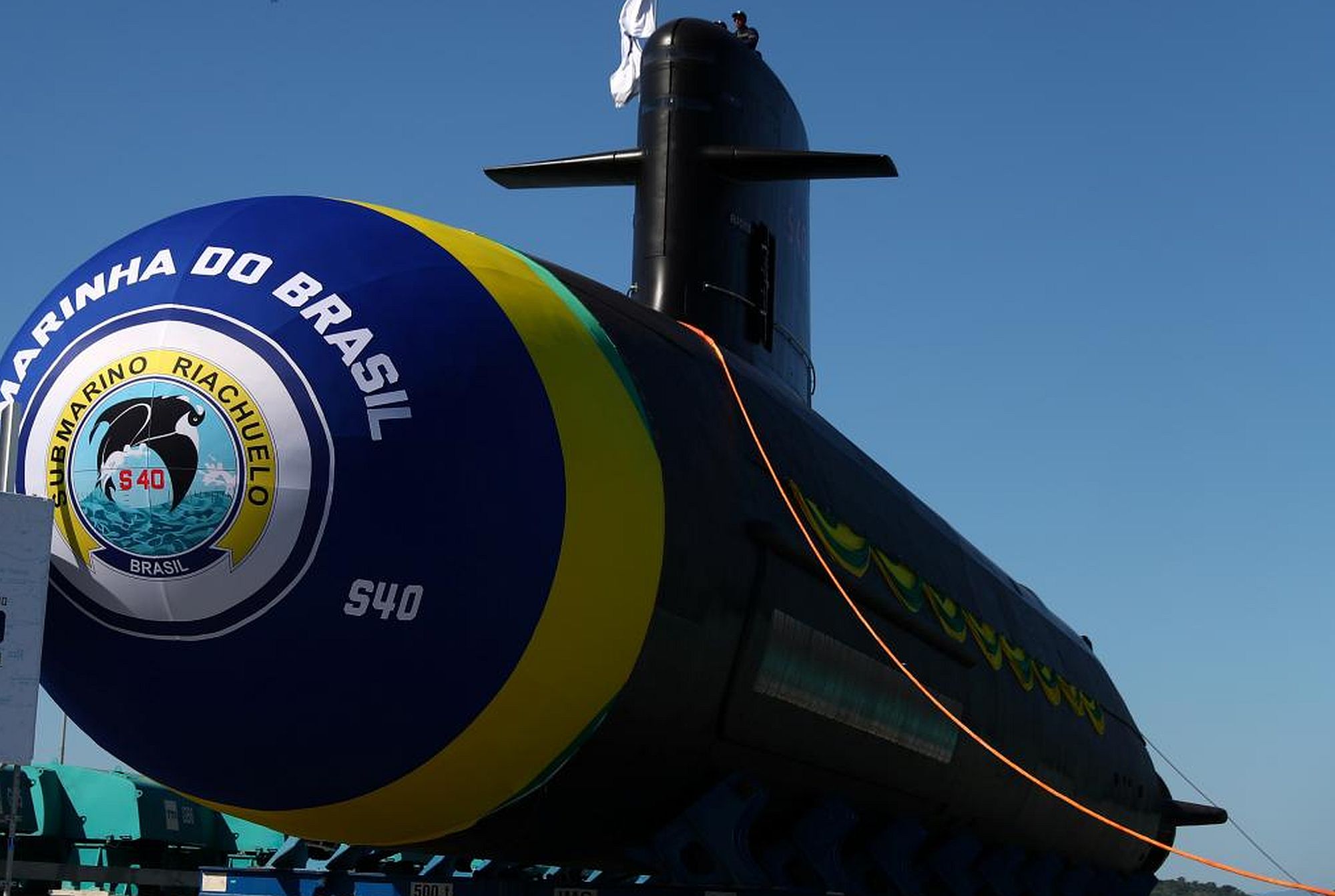The Brazilian Navy is a step closer to having a nuclear-powered submarine. The Riachuelo, the first of four conventional submarines from the Submarine Development Program (PROSUB, in Portuguese), was launched into sea on December 14, 2018. In addition to conventional submarines, a nuclear-powered submarine is also in the works.
The Riachuelo started a two-year port trial, during which it will be evaluated for leakage, buoyancy, and balance, including at sea. It will then be incorporated into the Submarine Force, under the Brazilian Navy Fleet Command, which plans naval and air operations.
“Brazil, as a peaceful country, doesn’t build its ships as a threat to anyone or to disturb the tranquility of national waters, but rather because a country with a coastline of more than 7,000 kilometers needs certain resources to defend its sovereignty and rich marine biodiversity,” said then Brazilian President Michel Temer at the launching ceremony.
“Today’s ceremony [December 14, 2018] is the most recent accomplishment of a government project. None of this would have been possible without planning, a sense of continuity, or long-term vision.”
PROSUB was launched to protect the 3.5-million square km offshore area known as the Blue Amazon – a region filled with Brazilian mineral and oil reserves – and to safeguard the sovereignty of the country’s coastline. Ninety five percent of exports and imports go through Brazilian waters, which also contain about 90 percent of the country’s oil.
Mega Structure
PROSUB’s 2008 launch was followed by the construction of the Naval Complex, a mega structure in which the four conventional submarines and the first Brazilian nuclear-powered submarine are being built simultaneously.
The complex, based in Itaguaí city, about 70 km from Rio de Janeiro, contains the required infrastructure to operate and maintain both models.
The Naval Complex, among the most modern in the Southern Hemisphere, has a built-in metal structure manufacturing unit, construction and maintenance shipyards – the Naval Base – as well as additional structures and shops. The construction is located a few meters away from the existing facilities of Nuclebrás Equipamentos Pesados company, which house the largest metal press in Latin America.
A technology transfer agreement between Brazil and France made PROSUB’s development possible. France agreed to transfer technology to Brazil and train Brazilian personnel in submarine planning and construction. There is no knowledge exchange, however, in the nuclear sector.
The Navy Nuclear Program at the Brazilian Navy’s Technological Center in São Paulo develops all PROSUB’s nuclear technology. Only six countries in the world can build and operate nuclear-powered submarines.
“The cornerstone for the Brazilian multipurpose reactor was laid last June [2018], for a reactor that will enable the country to achieve its radioisotope independency. We have one of the world’s largest uranium reserves, we own the nuclear technology, and we can use it across various segments to benefit our society; [we may also apply it] for many other purposes, such as agriculture, etc.,” said Brazilian Navy Admiral Bento Costa Lima Leite de Albuquerque Júnior, then general director of the Brazilian Navy’s nuclear and technological development.
PROSUB prioritized the purchase of components made in Brazil to strengthen the national defense industry. The total cost of the program is estimated at US$ 9.5 billion, with US$ 4.6 billion already invested.
After Riachuelo, it is estimated that one submarine will be launched at sea each year: the Humaitá in 2020, the Tonelero in 2021, and the Angostura in 2022. The Álvaro Alberto nuclear-propulsion submarine is set to launch in 2029.
The Riachuelo
The new submarines are a modified version of the diesel-electric Scorpène models used in France. The Riachuelo and similar versions have a 35-crew-member capacity, autonomy of more than 70 days at sea, and can reach speeds of more than 20 miles per hour and navigate at 300 meters deep.
The Riachuelo is 75 m long, equivalent to a four-story building, and weighs 1,870 tons. The new submarine has strong firepower, with 533 mm torpedo launchers, anti-ship missiles and devices to mine enemy areas, destroy ships, contain, limit, or delay transit.
During the two-year trials and sea evaluations, the submarine will have to navigate at maximum speed for several hours, cover large distances, emerge at an acute vertical angle, and submerge under critical conditions.
The Riachuelo will undergo battle simulations and virtual combat sieges. It will have to fire all arms and rehearse exit and rescue of combat diver teams. There will also be exercises such as fire combat, shipwreck, and stealth intelligence actions.
The defense and attack simulations will be part of crew members’ routine. The submarine will test diving safety limits, among others. Only then the Riachuelo will be able to complete its mission and protect the country’s oceanic waters.
Riachuelo will join the Brazilian Navy’s fleet of five submarines: Tupi, Tamoio, Timbira, Tapajó and Tikuna.
This article appeared originally in Diálogo – https://dialogo-americas.com/en/home












